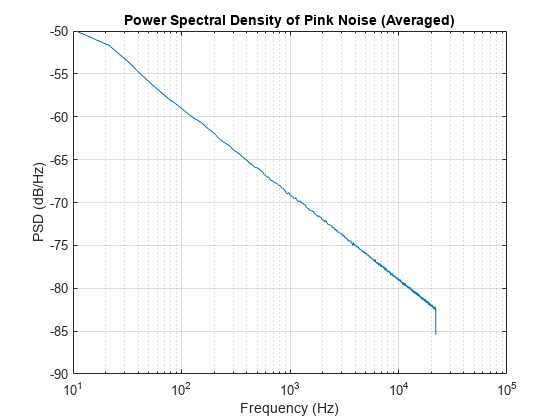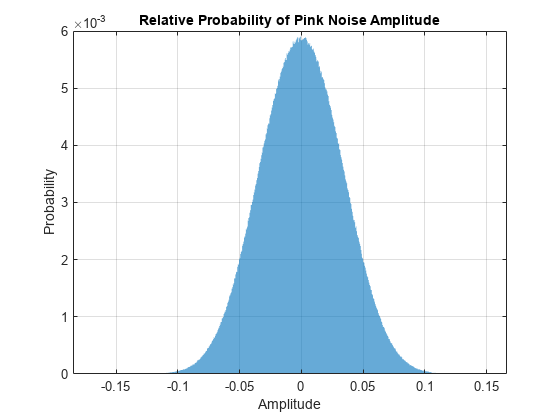pinknoise
Generate pink noise
Syntax
Description
Examples
Input Arguments
Output Arguments
Tips
The concatenation of multiple pink noise vectors does not result in pink noise. For streaming applications, use
dsp.ColoredNoise.
Algorithms
Pink noise is generated by passing uniformly distributed random numbers through a series of randomly initiated SOS filters. The resulting pink noise amplitude distribution is quasi-Gaussian and bounded between −1 and 1. The resulting pink noise power spectral density (PSD) is inversely proportional to frequency:
Extended Capabilities
Version History
Introduced in R2019b
See Also
dsp.ColoredNoise | rng | rand

